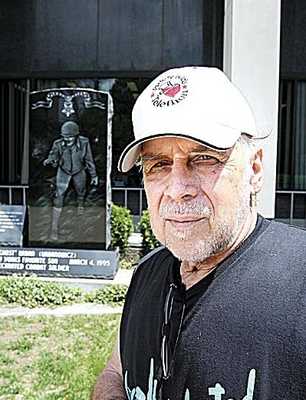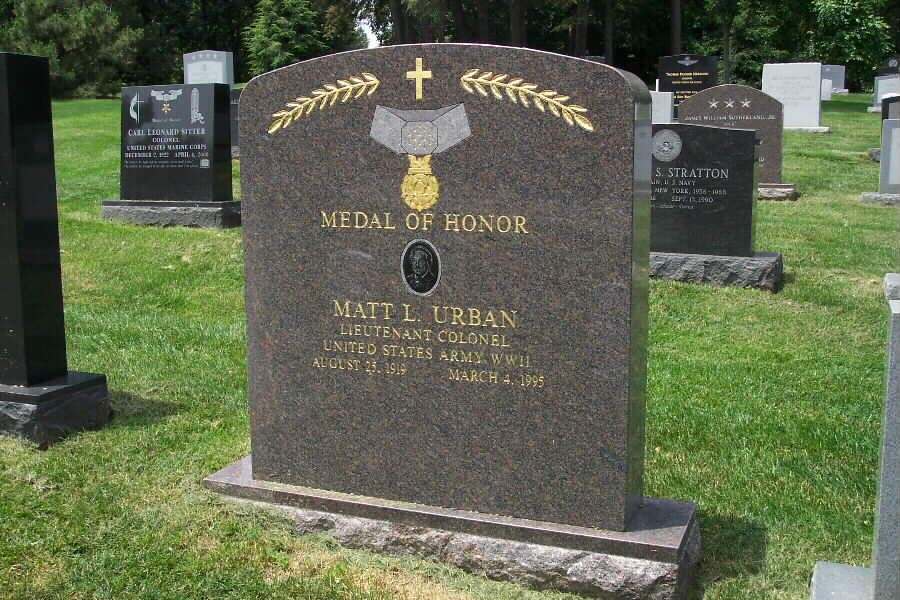From a contemporary press report
Matt Urban died at age 75. He was a World War II hero who earned 7 Purple Hearts, the Legion of Merit, the Croix de Guerre with a Silver Star and the Congressional Medal of Honor.
Friends said they were prepared for the worst. “The veterans community is gearing up for what's going to happen next,” said Roger Jansen, a friend of Urban and state treasurer for the Disabled Veterans of America. “We're a small city and it's going to be a big loss.”
Urban collapsed while working in his office Friday. The nature of his illness was not disclosed.
Since retiring as Holland recreation director five years ago, Urban has traveled nationwide to speak to veterans groups. He wrote an autobiography, “The Matt Urban Story: Our Most Decorated Combat Soldier.” Urban's raspy voice was the result of a bullet wound to the neck. He was shot during a gun battle between U.S. and German infantry. After his neck wound, Army doctors gave Urban no hope for survival. But he recovered two years later with damaged vocal cords.
Urban received the Congressional Medal of Honor from President Jimmy Carter years after he was recommended for the honor. Officials discovered they mistakenly had overlooked awarding the medal to Urban. His exploits on WWII battlefields earned him as many citations as the legendary Audie Murphy, thereby making him one of America's most-decorated soldiers.
He died on Saturday, 4 Mar 1995, at Holland Community Hospital in Holland, Michigan. He was 75 and lived in Holland. The cause was complications from a collapsed lung brought on by one of his 7 war wounds, a spokesman for the family said.
Urban was called the Ghost by his German foes because he kept coming back to fight despite his wounds, his record was capped with the Medal of Honor in 1980 after a long-lost recommendation for the nation's highest military honors was unearthed and acted upon by President Jimmy Carter. According to the Total Army Personnel Command in Alexandria, Virginia, both Murphy and Urban were awarded 29 medals.
His Medal of Honor citation for referred to ten separate acts of bravery that spanned almost the entire Normandy campaign. Early in the fighting in northern France, he was wounded twice battling tanks with a bazooka. After shrapnel ripped his leg, he was shipped back to England to an Army hospital, but within six weeks he had made his way back to the front. Once there, he found his unit bogged down by German fire. He ran across open ground to an unmanned American tank, and with machinegun bullets ricocheting around him, mounted the turret, climbed in and returned the enemy fire, routing the German position.
He fought with 9th Division's 60th Regiment in North Africa, Sicily, France and finally in Germany.
His citations, besides the Medal of Honor, included the Bronze Star with 2 Oak Leaf Clusters, Silver Star with 1 Oak Leaf Cluster, Legion of Merit, Croix-de-Guerre, Presidential Unit Citation, American Campaign Medal and Purple Heart with 6 Oak Leaf Clusters.
He is survived by his wife, Jennie; a daughter, Jennifer Helen Urban of Cambridge, Massachusetts, and a brother, Dr. Stanley T. Urban of Buffalo, New York.
From a press report: March 6, 1995:
Retired Lieutenant Colonel Matt Urban — perhaps the most decorated soldier in US history — died of complications from a collapsed lung Saturday in Holland, Michigan. He was 75 and had won 29 medals for valor in World War II, three more than war hero Audie Murphy. The 1989 Guinness Book of World Records gave the record to Colonel Urban.
He waited a long time to get the nation's highest military decoration, the Medal of Honor. “When I came home, I never thought about war,” he said in 1988. “That's why the medal was 35 years late. . . . I just never pursued it.” But a friend did, and in 1980, Col Urban got the medal. Perhaps more amazing than the Medal of Honor were the seven Purple Hearts — one for each wound –Colonel Urban earned in the war. By the time he hit the beach at Normandy, France, he'd been wounded three times in North Africa. The Germans nicknamed him the Ghost. “I guess it was because I kept coming back,” he said. While still recovering from a leg wound, he performed the act that earned the Medal of Honor.
Carrying a cane in one hand and a gun in the other, he came on American troops pinned down by German fire. A sergeant later said: “One of the craziest officers suddenly appeared before us, yelling like a madman and waving a gun in his hand. . . . He got us on our feet, though, gave us our confidence back and saved our lives.” A couple of months later, Colonel Urban was shot through the neck, his seventh and final combat wound.
After the war, he served as recreation director for Port Huron for seven years, then director of the Monroe Community Center for 16 years. His last job was director of the civic and recreation department of Holland. He retired in 1989 to promote his book, “The Matt Urban Story: Life and World War II Experiences.”
Survivors include his wife, Jennie; a daughter, Jennifer, and a brother. Visitation will be 1-4 and 7-9 p.m. today at Dykstra Funeral Home, 188 W. 32nd St., Holland. A funeral mass will be at 10 a.m. Tuesday at St. Francis de Sales Church, 284 Maple Ave., Holland. Colonel Urban will be buried in Arlington National Cemetery, Virginia.
Aug 25, 1919-Mar 4, 1994.
He is buried in Section 7-A of Arlington NationalCemetery, near both the Memorial Amphitheater and the Tomb of the Unknowns.
URBAN, MATT
Rank and organization: Lieutenant Colonel (then Captain), 2d Battalion, 60th Infantry Regiment, 9th Infantry Division, World War II. Place and date: Renouf, France, 14 June to 3 September 1944. Entered service at: Fort Bragg, North Carolina, 2 July 1941. Date and place of birth: 25 August 1919, Buffalo, New York.
Citation
Lieutenant Colonel (then Captain) Matt Urban, l 12-22-2414, United States Army, who distinguished himself by a series of bold, heroic actions, exemplified by singularly outstanding combat leadership, personal bravery, and tenacious devotion to duty, during the period 14 June to 3 September 1944 while assigned to the 2d Battalion, 60th Infantry Regiment, 9th Infantry Division.
On 14 June, Captain Urban's company, attacking at Renouf, France, encountered heavy enemy small arms and tank fire. The enemy tanks were unmercifully raking his unit's positions and inflicting heavy casualties. Captain Urban, realizing that his company was in imminent danger of being decimated, armed himself with a bazooka. He worked his way with an ammo carrier through hedgerows, under a continuing barrage of fire, to a point near the tanks. He brazenly exposed himself to the enemy fire and, firing the bazooka, destroyed both tanks. Responding to Captain Urban's action, his company moved forward and routed the enemy.
Later that same day, still in the attack near Orglandes, Captain Urban was wounded in the leg by direct fire from a 37mm tank-gun. He refused evacuation and continued to lead his company until they moved into defensive positions for the night. At 0500 hours the next day, still in the attack near Orglandes, Captain Urban, though badly wounded, directed his company in another attack. One hour later he was again wounded. Suffering from two wounds, one serious, he was evacuated to England.
In mid-July, while recovering from his wounds, he learned of his unit's severe losses in the hedgerows of Normandy. Realizing his unit's need for battle-tested leaders, he voluntarily left the hospital and hitchhiked his way back to his unit hear St. Lo, France. Arriving at the 2d Battalion Command Post at 1130 hours, 25 July, he found that his unit had jumped-off at 1100 hours in the first attack of Operation Cobra.” Still limping from his leg wound, Captain Urban made his way forward to retake command of his company. He found his company held up by strong enemy opposition. Two supporting tanks had been destroyed and another, intact but with no tank commander or gunner, was not moving. He located a lieutenant in charge of the support tanks and directed a plan of attack to eliminate the enemy strong-point. The lieutenant and a sergeant were immediately killed by the heavy enemy fire when they tried to mount the tank. Captain Urban, though physically hampered by his leg wound and knowing quick action had to be taken, dashed through the scathing fire and mounted the tank. With enemy bullets ricocheting from the tank, Captain Urban ordered the tank forward and, completely exposed to the enemy fire, manned the machine gun and placed devastating fire on the enemy.
His action, in the face of enemy fire, galvanized the battalion into action and they attacked and destroyed the enemy position.
On 2 August, Captain Urban was wounded in the chest by shell fragments and, disregarding the recommendation of the Battalion Surgeon, again refused evacuation. On 6 August, Captain Urban became the commander of the 2d Battalion. On 15 August, he was again wounded but remained with his unit.
On 3 September, the 2d Battalion was given the mission of establishing a crossing-point on the Meuse River near Heer, Belgium. The enemy planned to stop the advance of the allied Army by concentrating heavy forces at the Meuse. The 2d Battalion, attacking toward the crossing-point, encountered fierce enemy artillery, small arms and mortar fire which stopped the attack. Captain Urban quickly moved from his command post to the lead position of the battalion. Reorganizing the attacking elements, he personally led a charge toward the enemy's strong-point. As the charge moved across the open terrain, Captain Urban was seriously wounded in the neck. Although unable to talk above a whisper from the paralyzing neck wound, and in danger of losing his life, he refused to be evacuated until the enemy was routed and his battalion had secured the crossing-point on the Meuse River. Captain Urban's personal leadership, limitless bravery, and repeated extraordinary exposure to enemy fire served as an inspiration to his entire battalion. His valorous and intrepid actions reflect the utmost credit on him and uphold the noble traditions of the United States.
WWII hero Lt. Col. Matt Urban is no longer ‘The Ghost’ in his native city
Monument honors Buffalo-born legend
By Tom Buckham
Courtesy of the Buffalo News
14 June 2008
He moves into battle on cat’s feet. Slightly crouched, peering out from under his steel helmet, poised to fire the automatic pistol in his right hand. In the background, a tank rumbles over a rise, illuminated by a rocket burst overhead.
The image of Lieutenant Colonel Matt L. Urban, carved in polished black granite on a monument that will be dedicated downtown today, is supposed to convey what awestruck German soldiers meant during World War II when they nicknamed the man who is arguably America’s most decorated warrior “The Ghost.”
Buffalo artist Ralph Siriani’s rendering of Urban at war seems to capture the legend perfectly — at long last and for all time.
Norm Skulski led the effort to create a monument to honor World War II hero Matt Urban.
“It’s been a long time coming,” said Jenny Urban of Holland, Mich., who married the unassuming Army hero after the war. Urban was born Matt L. Urbanowicz in Buffalo on August 25, 1919. He died at age 75 in 1995 of complications from one of his war injuries.
“Of all the honors, I really think he would love this the most,” his widow said.
That is quite a statement from the woman who stood alongside her husband as he received the Medal of Honor from President Jimmy Carter in Washington, D. C., in 1980 and who heard the president proclaim him America’s greatest war hero.
The dedication also will reward a group of Buffalonians, led by Norm Skulski and Art Dembik, who have fought for years to get the late World War II hero the respect they feel he had been denied in his hometown. The most-decorated title belonged to Urban’s wartime contemporary and postwar movie actor Audie Murphy for more than 30 years before Urban was awarded the Medal of Honor. That gave him a record 29 combat decorations to Murphy’s 28, according to Arlington National Cemetery, where both are buried. However, the Army Human Resources Command in Alexandria, Virginia, credits each with 28 medals.
As a young Captain with the 9th Infantry Division’s 60th Regiment, Urban was wounded seven times in Tunisia, Sicily, France and Belgium but kept going back to fight. His invincibility led German foes to nickname him “The Ghost.”
His bravest exploit occurred following the D-Day invasion of Europe. Shot in the leg a few days after landing on Omaha Beach, he managed to rejoin his pinned-down company near the Normandy village of St. Lo.
“One of the craziest officers suddenly appeared before us, yelling like a madman and waving a gun in his hand,” a Sergeant later said.
Leading the attack, Urban climbed atop a tank to man a machine gun under heavy enemy fire. He was praised for saving “countless American lives” and helping the Allies break out of the St. Lo pocket.
In addition to the Medal of Honor, Urban’s gallantry earned him two Silver Stars, two Bronze Stars and seven Purple Hearts, among other medals. France also bestowed the Croix de Guerre.
Jenny Urban said she never knew of Urban’s exploits until after they wed, when she happened to open a drawer where he had stashed some things.
“There were all these medals,” she recalled. “I said, ‘What is all of this?’ ”
After the war, Matt and Jenny Urban settled in Holland, Michigan, where he was recreation director and not far from her hometown of Port Huron. He was honored long ago in his adopted city, where a monument and a sports complex bear his name.
His hometown will honor him today, during 11 a. m. ceremony in front of the Rath County Office Building on Franklin Street. The ceremony will be vindication for Art Dembik, a decorated World War II veteran and Urban’s pal at East High School in the 1930s, and Norm Skulski, a nonveteran, who campaigned to get the monument funded.
Meetings with city and county leaders over the years got them nowhere until former Erie County Legislator Raymond K. Dusza persuaded the Legislature to set aside $10,000 for the project in 2003, recalled Skulski.
It has taken five more years to get the tribute — overdue in Skulski’s and Dembik’s estimation — carved and put in place near the building’s entrance.
Now, Skulski and Dembik, a former Amherst resident who lives in a Connecticut nursing home, want Urban’s name attached to a public building — perhaps the new federal courthouse on Niagara Square or Veterans Affairs Medical Center on Bailey Avenue. Skulski said he and his wife, Diane, have collected 3,000 signatures in their push to get the courthouse named for Urban.
Dembik will attend the dedication along with Jenny Urban and the Urbans’ daughter, Jennifer Hurford of Champaign, Ill. The milestone will be toasted afterward at Buffalo’s Finest bar, 2163 Seneca Sreet. The celebration will be open to the public.
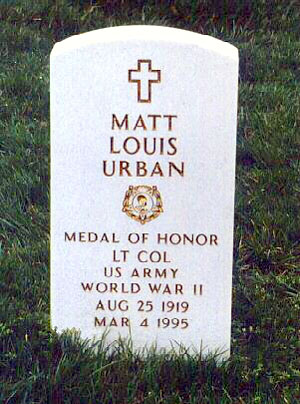
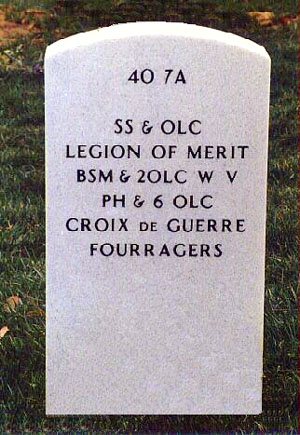
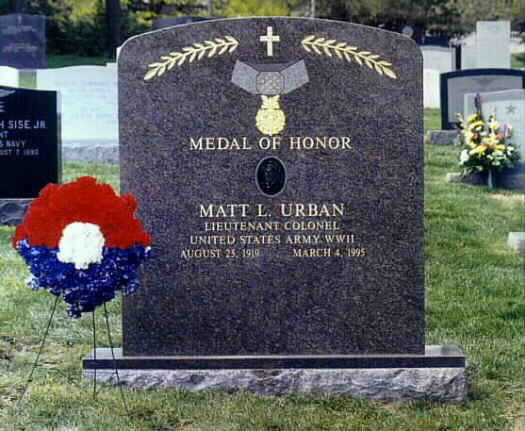
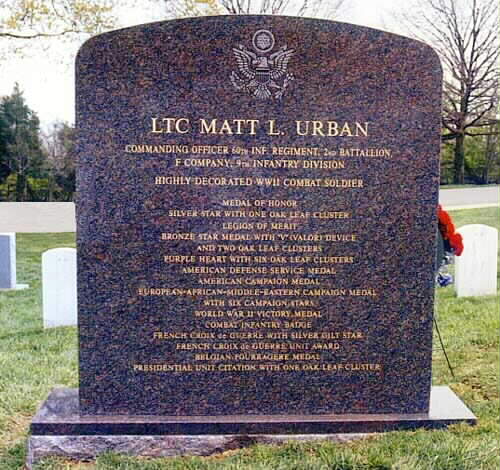
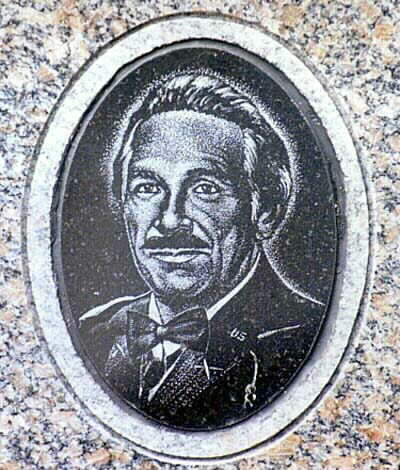
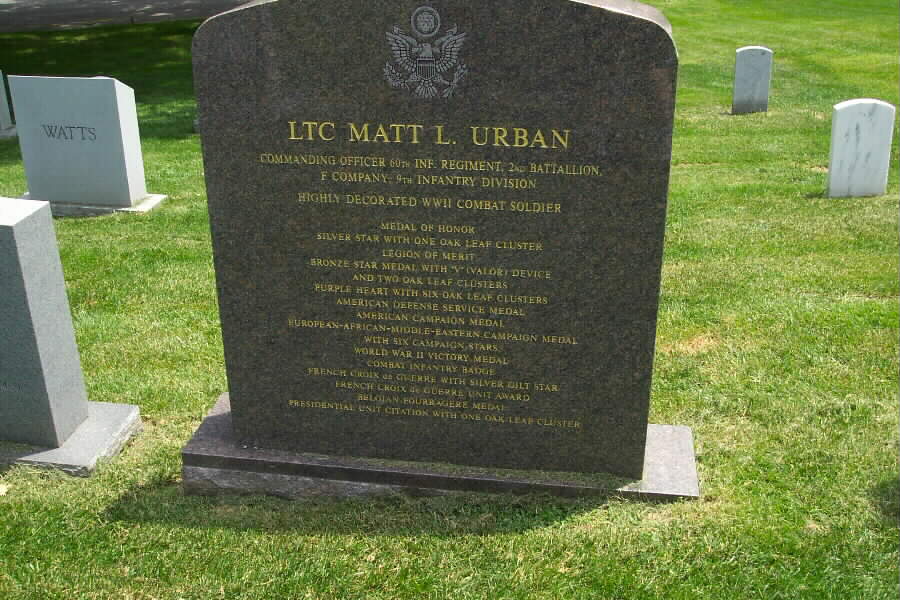
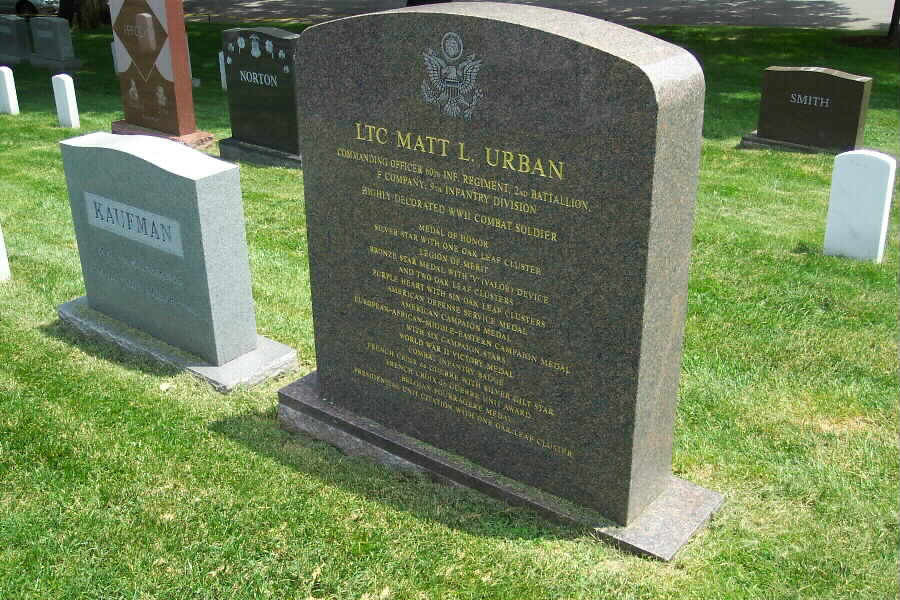
Michael Robert Patterson was born in Arlington and is the son of a former officer of the US Army. So it was no wonder that sooner or later his interests drew him to American history and especially to American military history. Many of his articles can be found on renowned portals like the New York Times, Washingtonpost or Wikipedia.
Reviewed by: Michael Howard

